The AmazonBasics Aurora Vista 1500 UPS Review: Passable Power
by E. Fylladitakis on July 5, 2022 8:00 AM EST- Posted in
- Cases/Cooling/PSUs
- Amazon
- UPS
- 1500VA
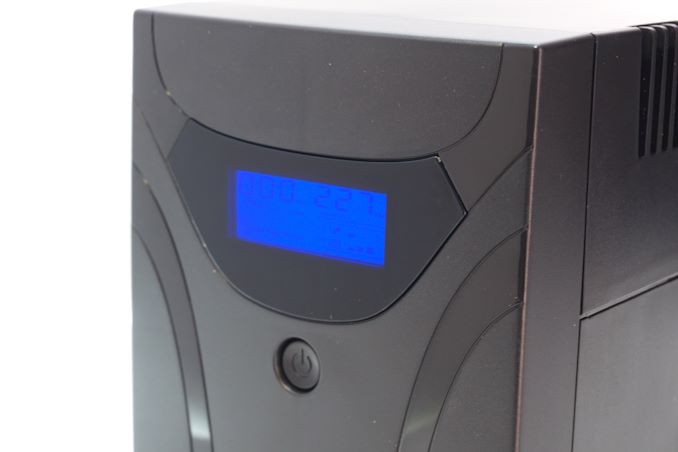
AmazonBasics is a private label of products owned by Amazon. The subsidiary was founded back in 2009 and initially offered only basic products, such as cables and office consumables. More and more products are being added under the AmazonBasics label every day. Today, Amazon retails thousands of products under the AmazonBasics label, ranging from paperclips to living room sets. The only common point amongst all of these products is that they are very aggressively priced, usually selling for significantly less than any other competitive product from an established brand.
In this review, we are having a look at a very popular low-cost UPS that Amazon distributes under the AmazonBasics label, the AmazonBasics Aurora Vista 1500VA. Much like its name suggests, it is a very basic design with minimal features, yet it is very aggressively priced. Taking the renowned Amazon customer service into account, it seems like an amazing deal for that kind of output.
| AmazonBasics Aurora Vista 1500 VA UPS | |||
| Power Capacity | 1500VA/900W | ||
| Output Voltage | 230 VAC | ||
| Input Voltage | 170-280 VAC | ||
| Type | Backup | ||
| True Sinewave | No | ||
| Battery | Lead-Acid, 2x 12V/9Ah | ||
| Full Load Backup Time | < 1 min | ||
| Half Load Backup Time | About 6.5 min | ||
| Battery-Backed Sockets | 3 (Type F) | ||
| Surge Protected Sockets | No | ||
| USB-A Outputs | No | ||
| Ethernet Surge Protection | Yes | ||
| LCD Display | Yes | ||
| Dimensions | 139 x 364 x 195 mm | ||
| Weight | 10.7 kg | ||
The AmazonBasics Aurora Vista 1500 VA UPS
We received the Aurora Vista 1500 VA UPS in a very simple cardboard box with nothing but Amazon’s logo on it. Inside the box, the unit is protected by thick packaging foam slabs. Inside the box, we found only an AC power cable, a USB cable, and a manual.
The external design of the Aurora Vista 1500 VA is unassuming. Measuring 139 mm × 364 mm × 195 mm (W × D × H), it is relatively compact for a 1500 VA unit. The power factor of this unit is poor so its real power rating output is just 900 Watts.
The LCD screen of the Aurora Vista 1500 VA is always on as long as the UPS is plugged into a live power source, regardless of whether the UPS is turned off or not. If it is not connected to a power source, the LCD will be continuously on while the UPS is active but will turn off if the UPS is turned off – otherwise, the continuous power draw would destroy the batteries in a matter of hours.
The screen of the Aurora Vista 1500 VA is basic and has very poor viewing angles. It is almost impossible to read the screen if you are not directly in front of the unit. The information displayed are just the current status of the unit, the input and output voltage, and the battery/load status in 25% increments.
We received the EU/DE version of the unit, therefore it has three standard Schuko output plugs. Unlike some products where some of the output plugs act only as surge arresters and are not connected to the battery output, all three Schuko plugs are connected to the battery backup. The number and type of output plugs depend on the region/country the UPS is being sold at, with Amazon also offering a version with C13 output plugs available. All versions have the typical IEC C14 input plug, as well as a USB port and an RJ45 surge arrester. A simple but effective restorable circuit breaker is placed at the lower-left corner of the backside.
The fan of the unit will only turn on while the unit is charging its batteries or while it is running on battery backup. It has only one speed and it is clearly audible. Placing this unit into a bedroom, or any area where noise is a concern, would be a poor choice if grid anomalies are frequent. The air intakes are small openings across the top and bottom edges of the unit, which is a simple but very effective design.
The front fascia of the unit can be removed to access the battery compartment. It cannot be simply pulled off though, as a screw at the bottom side of the fascia is holding it locked in place. Once the screw is removed, the fascia can be snapped off the main unit by simply using a significant amount of force. Behind it, we can see two batteries secured using a metal brace. The metal brace is not fastened and can be removed by simply pulling it upwards.
Once the metal brace is removed, the batteries can be simply pulled out of the unit. The wires are not very long and must be removed before the batteries are pulled out completely. Only the top and bottom connectors must be removed to pull the batteries out but the center bridge obviously has to be transferred to the replacement batteries before reinserting them into the unit.
The manufacturer of the two batteries is Leoch, a Chinese manufacturer that is one of the largest on the planet. Leoch batteries are considered to be of at least average quality or better, which makes them a great choice for a low-cost UPS. The AmazonBasics Aurora Vista 1500 VA unit has two 12V 9Ah batteries connected in series (24V 9Ah output).
Splitting the UPS open reveals a sizable transformer secured at the bottom half of the body, while the circuitry is attached to the top. The parts are strategically placed to receive the airflow coming in from the side intake openings. The OEM of the Aurora Vista 1500 VA is Lian Zheng Electronic Co Ltd, a Chinese OEM of industrial electronic products. That name probably means nothing to most readers but Lian Zheng actually is one of the biggest and most reputable UPS OEMs on the planet. Many products sold under premium brand names are actually manufactured by them.
The circuitry is, as expected, extremely basic. All of the capacitors are electrolytic and supplied by Jamicon, a known but mediocre manufacturer. The eight main MOSFETS are IRF 3205. These are very commonly found in low-cost power electronic devices because they are very cheap and reliable. Their performance and/or efficiency is not great, as these were released over two decades ago. A single 7812CT voltage regulator can also be found on an overly large heatsink by itself.
The relays are supplied by Song Chuan, a very reputable Chinese manufacturer with a massive global presence. They are not the best relays available but they are definitely better than what we expected to see in a product of this price range and design philosophy.
Last but not least, the fan is supplied by Sunon. Sunon is one of the most reputable fan manufacturers in the world, if not the most reputable. On top of that, the fan inside the AmazonBasics Aurora Vista 1500 VA UPS is a Maglev MB60251V1 with a magnetic levitation engine, a design with an inspiringly long lifetime. We rarely see such fans in top-tier products and we definitely did not expect to find one inside an entry-level UPS.


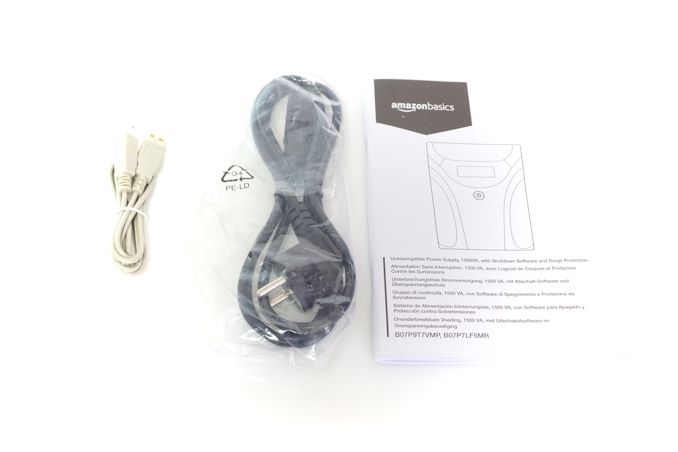

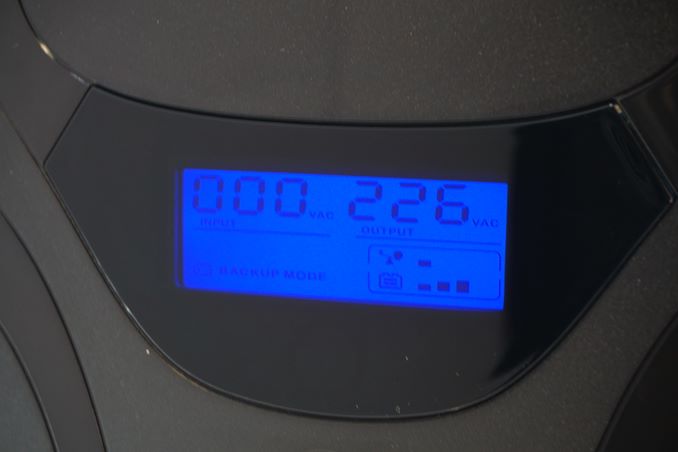
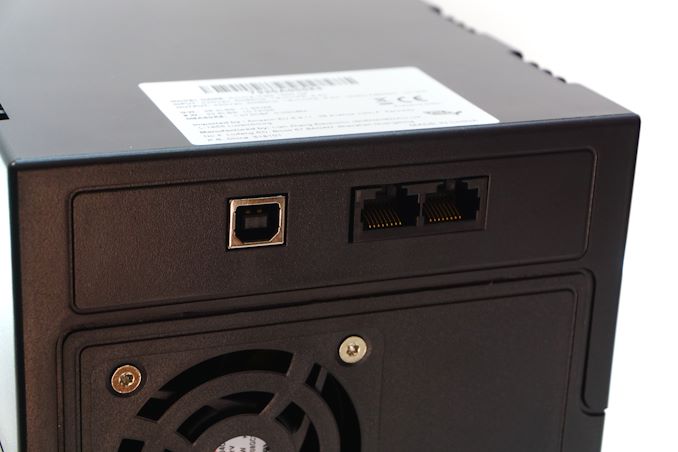
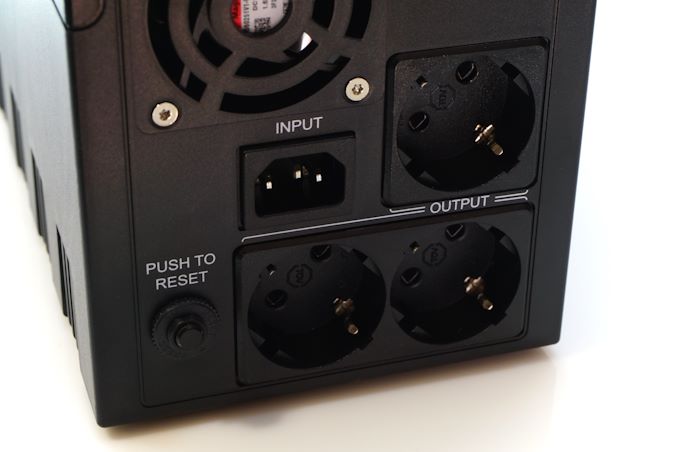
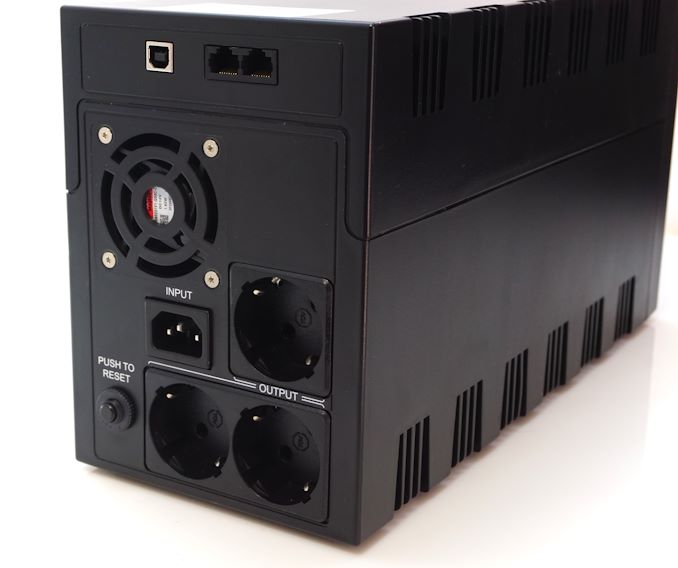

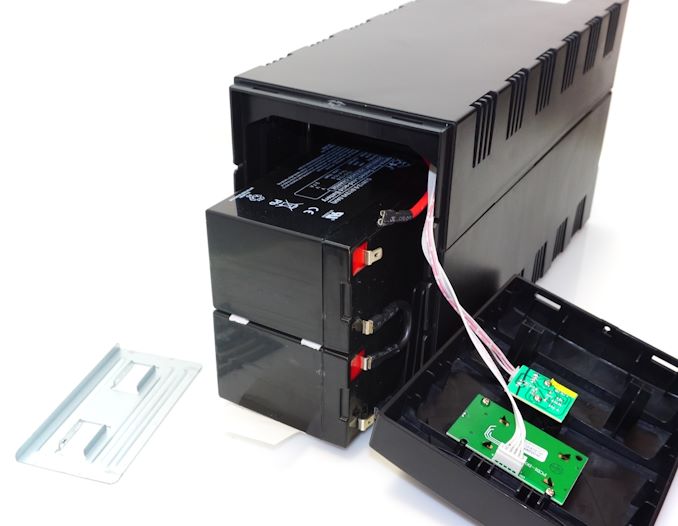
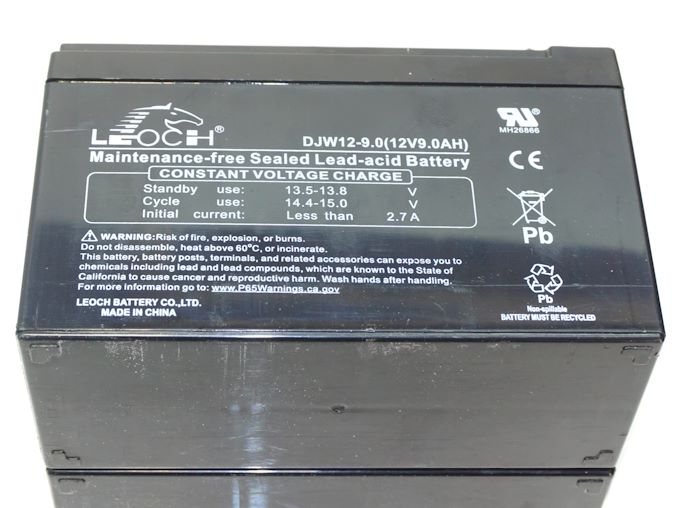
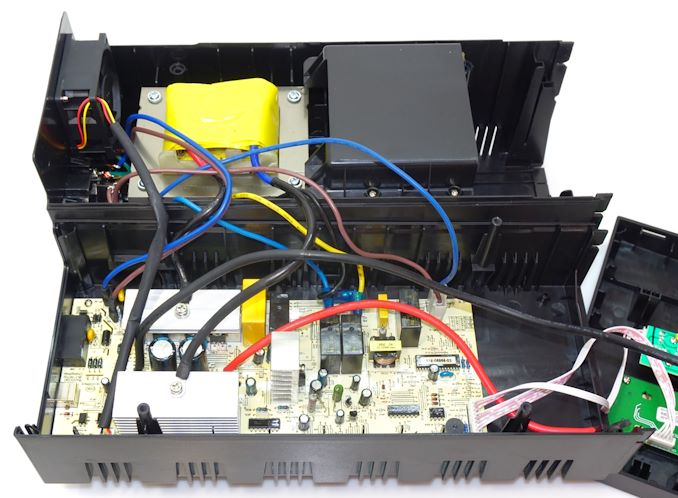

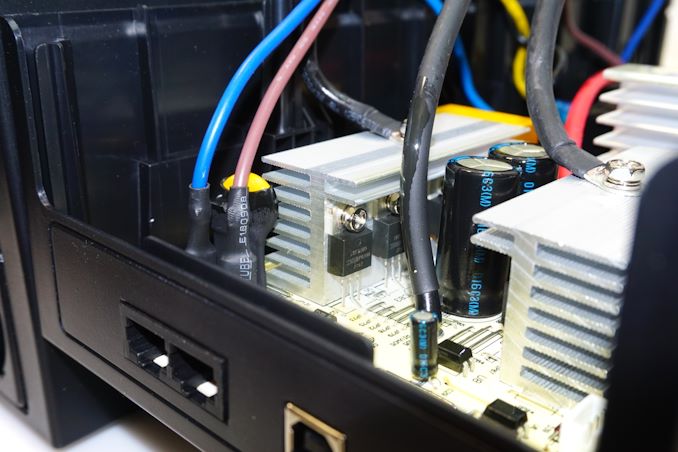
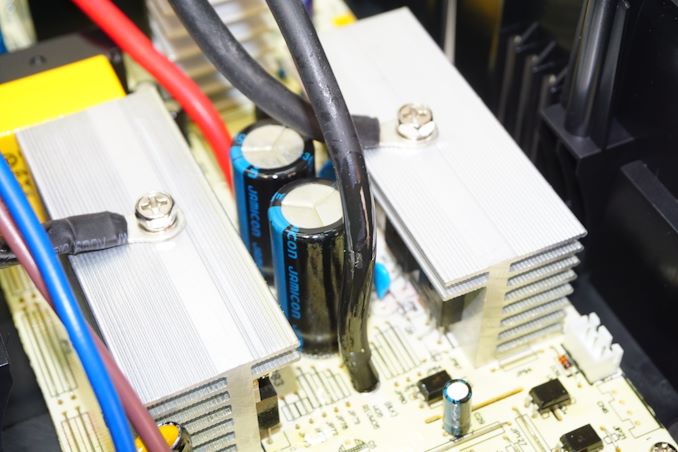

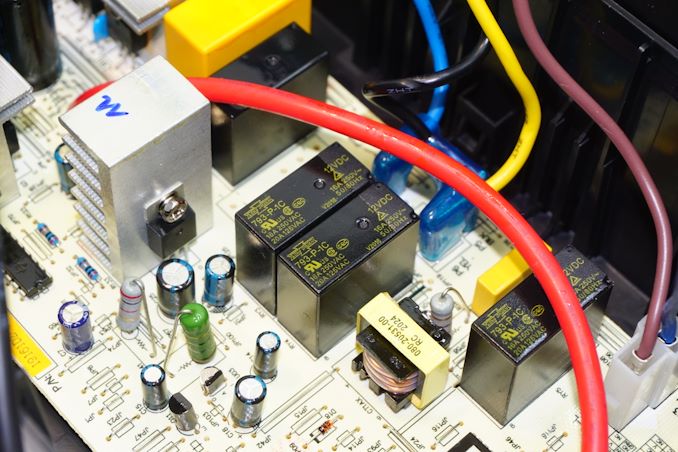
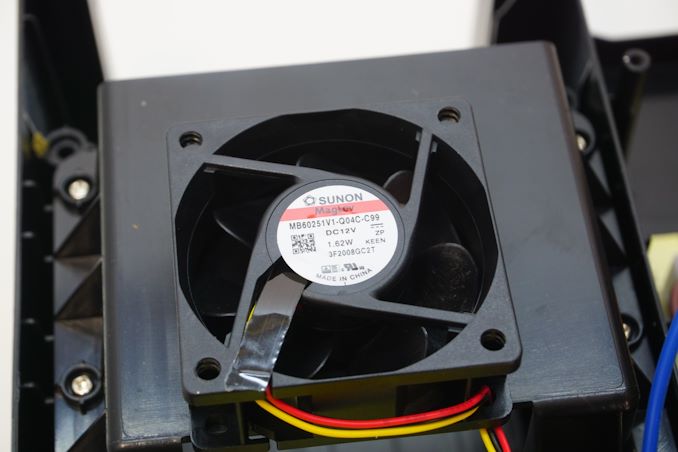








41 Comments
View All Comments
andychow - Tuesday, July 5, 2022 - link
Even on idle it draws 40-50 watts. So add that on top of 100 watts draw, and the efficiency of the unit while inverting the current, and you'll see that the batteries are fresh and working properly.It's just a terrible unit.
shadowjk - Sunday, July 10, 2022 - link
Lead-Acid battery ratings are usually 20 hour rates. if your load takes less than 20 hours to deplete the battery, you also get less capacity out.A guy called Peukert made an empirical formula, and the phenomenon has been named the Peukert effect.
Using a conservative Peukert exponent, runtime with 100% efficient conversion at 900W works out to around 23 seconds with 24V 9Ah battery. Not too far off from actual tested.
nicolaim - Tuesday, July 5, 2022 - link
It should be illegal for a product with 40-50 Watt idle power use to be sold!Einy0 - Tuesday, July 5, 2022 - link
Yeah, that is insane. It seems like 5-10 times more idle draw than I would expect.sonny73n - Thursday, July 7, 2022 - link
I didn't read the whole article but what! 40-50 watts just be idling? That's insane.I'm sure people will blame it on China because it's made in China even though it's designed in the US. But wait... iPhone is also made in China and designed in the US but I don't see anyone's given any credit to China, not that iPhone has anything spectacular. Western zombies are really rotten to the core.
29a - Thursday, July 7, 2022 - link
Designed in the US, WTF are you talking about? It's a Chinese OEM unit made by Lian Zheng.sonny73n - Friday, July 8, 2022 - link
Ok a product is made in China by some Chinese company but somehow has Amazon brand on it. Yeah yeah blame One Hung Low or whoever for this junk but you can't deny the fact is that it has American brand on it, which means they at least have control over this product's design.FYI there's a few components in iPhones are made by Chinese OEMs. But hey let's blame someone else if the product sucks and take all credits if the product is well made. Typical scums.
philehidiot - Friday, July 8, 2022 - link
You really want to find a way to be upset about that, don't you?shadowjk - Sunday, July 10, 2022 - link
These things usually have no separate powersupply to power their own electronics and the battery charger. At its heart there would be a 1500VA autotransformer. The minimum would be that there's 0V, 24V, and 230V taps. Sometimes they add more taps so they can boost voltage up or buck it down to handle brown outs without going to battery. Hard to tell from pictures, but looks like this unit might not have these "line-interactive" features.The same transformer used to push out 900W from a 24V battery is run in reverse to provide 24V from mains for battery charging. Using that large transformer for a tiny load is stupendously inefficient, but it's cheap. The article mentions a 12V linear regulator on oversized heatsink. They're probably regulating the 24V down to 12V, and then further down for the microprocessor. That regulator is going to waste 50% input Power as heat, so the heatsink better be big. At least the fan seems to be 12V, i wonder if the relay coils are also 12V?
I wonder if they could have made it cheaper still by skipping the intermediate 12V supply and used unregulated 24V to feed a 24V fan instead. As a bonus you would be able to tell from fan RPM if battery is close to fully charged. As the article author mentions, the fan is oddly high quality, and I'm surprised they added a big chunk of aluminium to get enough heatsink to power this fancy fan.
Mikewind Dale - Tuesday, July 5, 2022 - link
So I'll stick with my Cyberpower CP1500PFCLCD with a true sin wave. But thanks for this review. It's good to know what's out there Keep them coming!